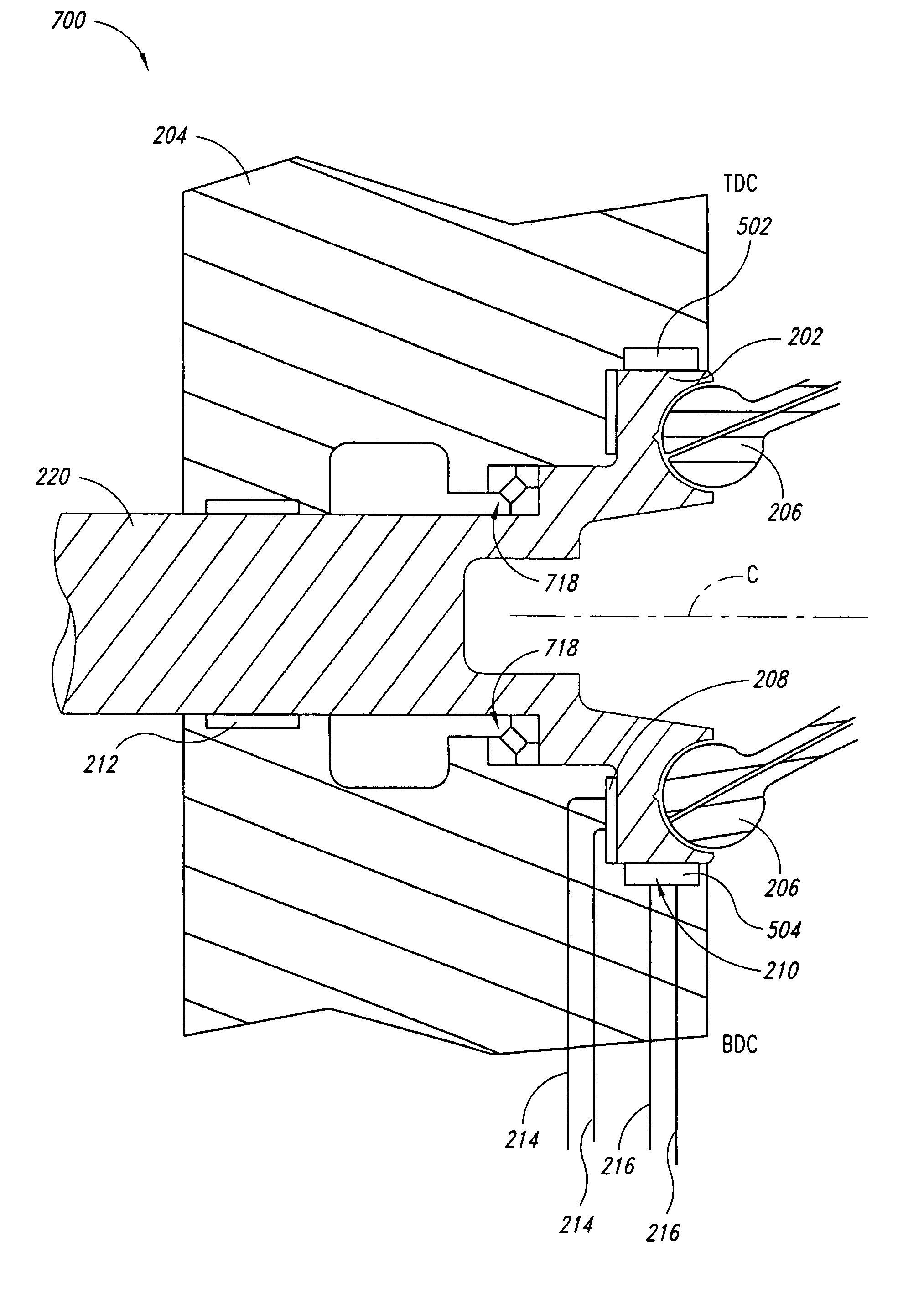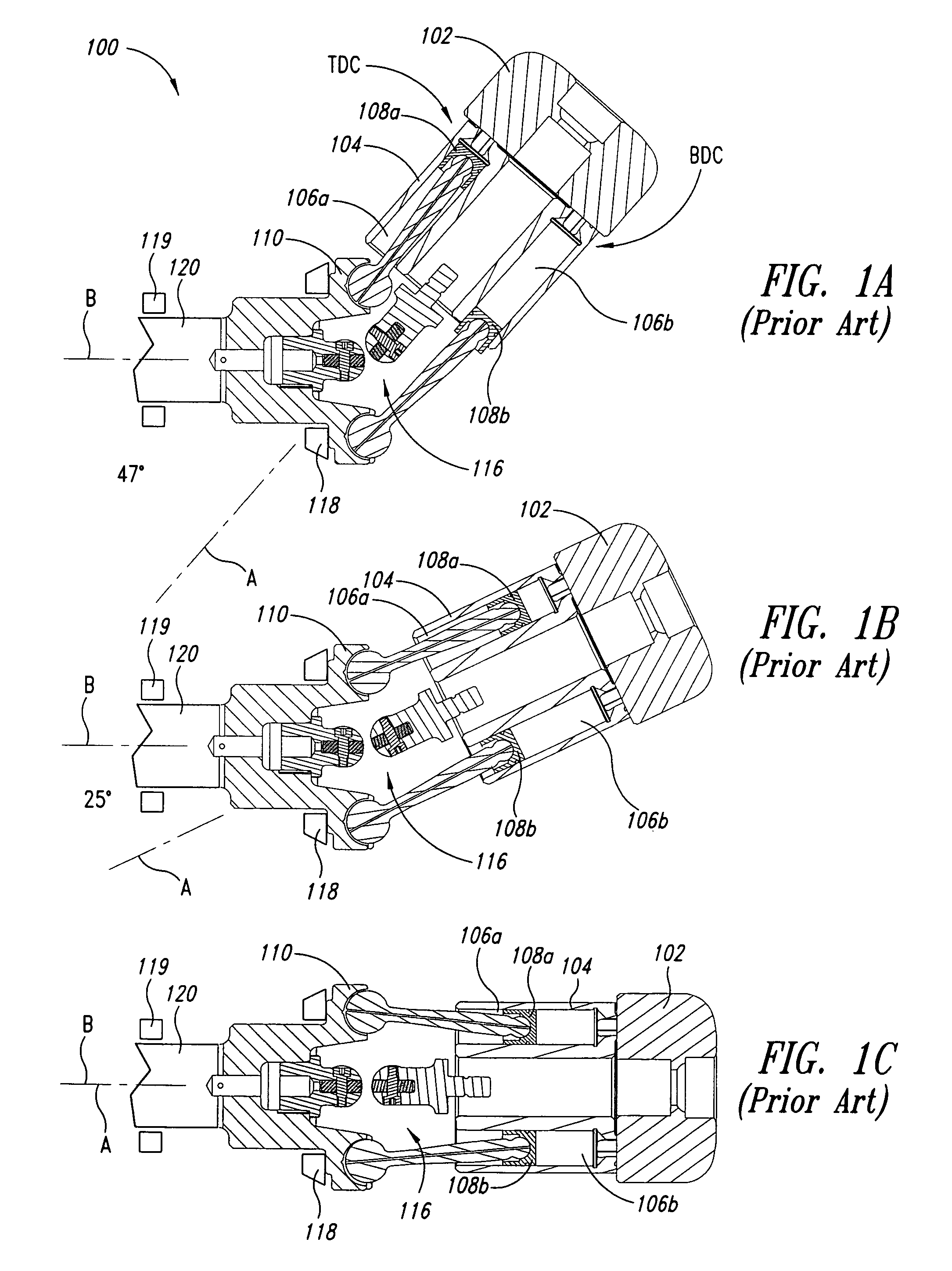Fluid bearing and method of operation
a technology of fluid bearings and bearings, applied in the direction of bearings, shafts and bearings, positive displacement liquid engines, etc., can solve the problems of fluid loss, damage to one or both surfaces, fluid loss, etc., to control friction and wear of bearings, control separation force, and effectively vary the active hydrostatic area
- Summary
- Abstract
- Description
- Claims
- Application Information
AI Technical Summary
Benefits of technology
Problems solved by technology
Method used
Image
Examples
Embodiment Construction
[0030]Various embodiments of the invention will now be described with reference to FIGS. 2-6. For the purpose of the disclosure and claims, the term fluid pressure will be used to refer to pressure of a fluid relative to area, such as, for example, psi. The term surface force will be used to refer to hydrostatic force exerted on an opposing surface, which is a function of the fluid pressure multiplied by the total surface area of pressurized fluid in contact with the opposing surface. Separating force refers to the force exerted by the surface force to separate elements. The term balance force will be used to refer to a hydrostatic force at which the surface force exerts a force equal to an opposing force exerted by an opposing surface. Either of the terms “motor” and “pump / motor” may be considered to read on a hydraulic motor, pump, or pump / motor.
[0031]The term axial force is used herein to refer to force vectors that lie substantially parallel to an axis of rotation of a motor's d...
PUM
 Login to View More
Login to View More Abstract
Description
Claims
Application Information
 Login to View More
Login to View More - R&D
- Intellectual Property
- Life Sciences
- Materials
- Tech Scout
- Unparalleled Data Quality
- Higher Quality Content
- 60% Fewer Hallucinations
Browse by: Latest US Patents, China's latest patents, Technical Efficacy Thesaurus, Application Domain, Technology Topic, Popular Technical Reports.
© 2025 PatSnap. All rights reserved.Legal|Privacy policy|Modern Slavery Act Transparency Statement|Sitemap|About US| Contact US: help@patsnap.com



